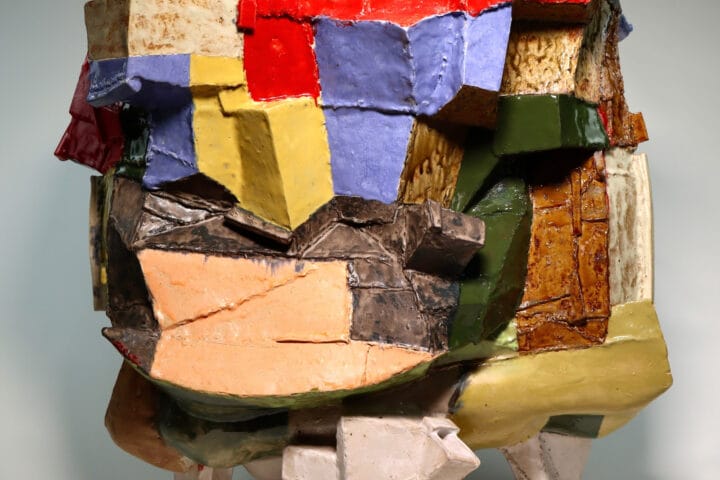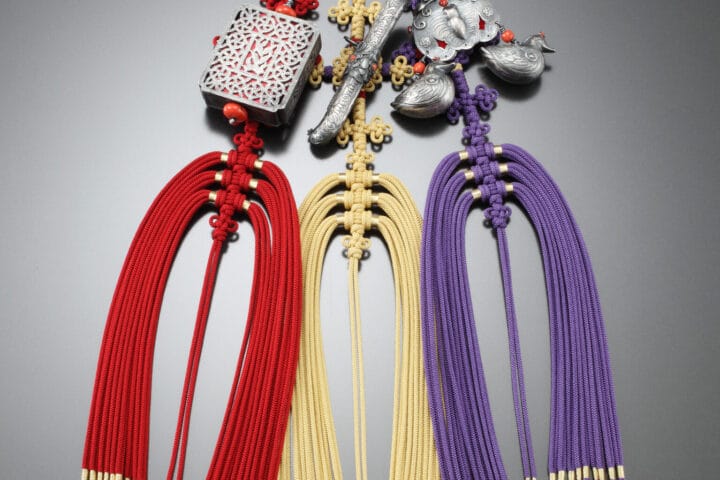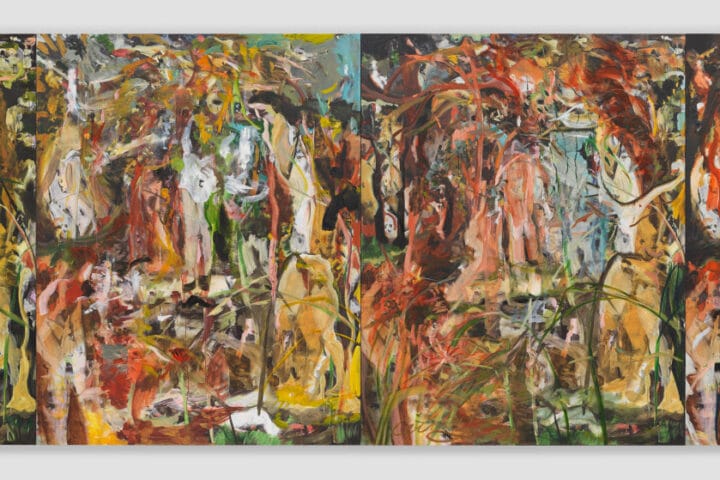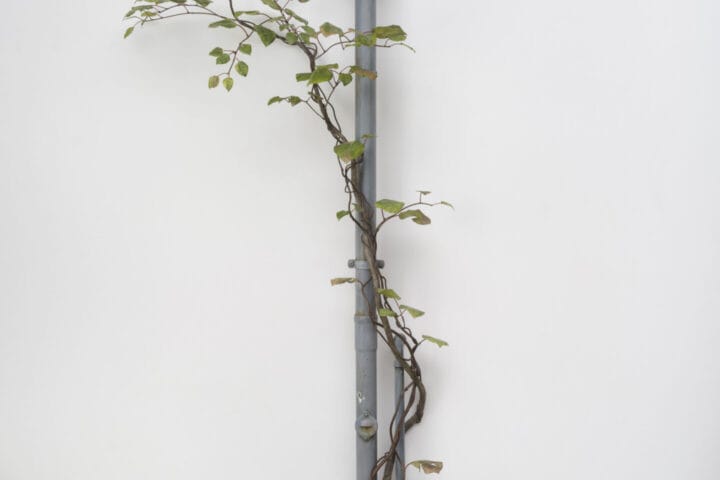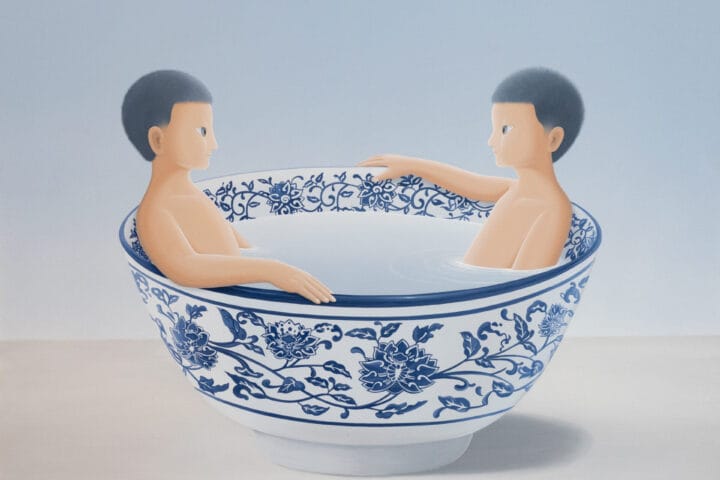Organized around a single object—the marble bust Why Born Enslaved! (1868) by French sculptor Jean-Baptiste Carpeaux—Fictions of Emancipation: Carpeaux Recast is the first exhibition at The Met to examine Western sculpture in relation to the histories of transatlantic slavery, colonialism, and empire. Created in the wake of American emancipation and some 20 years after the abolition of slavery in the French Atlantic, Why Born Enslaved! was shaped by the enduring popularity of antislavery imagery, the development of 19th-century ethnographic theories of racial difference, and France’s colonialist fascination with Africa. Opening March 10, the exhibition will explore the place of the sculpture within these contexts. More than 35 works drawn from The Met’s holdings and collections in Europe and the United States will offer an in-depth look at portrayals of Black enslavement, emancipation, and personhood, challenging the notion that representation in the wake of abolition constituted a clear moral or political stance.
The exhibition is made possible by the Iris & B. Gerald Cantor Foundation.
Additional support is provided by Allen R. Adler and Frances F. L. Beatty.
“From our present-day perspective we can recognize that underlying the empathy of Jean-Baptiste Carpeaux’s Why Born Enslaved! is a portrayal that also reinforced the colonial and imperial power dynamics of French society,” said Max Hollein, Marina Kellen French Director of The Met. “By exploring how this evocative bust fits into a continuum of Western representations of the Black figure, this exhibition aims to reframe the discourse about the relationship between art and abolition. It is one of a number of important projects at The Met that we have undertaken with an eye toward rethinking institutional narratives when bringing race to the forefront of discussions about art and culture.”
Highlights will include important works by Josiah Wedgwood, Frédéric-Auguste Bartholdi, Charles-Henri-Joseph Cordier, Edmonia Lewis, Louis-Simon Boizot, and others that show how Western artists of the 19th century engaged with the Black figure as a political symbol and site of exoticized beauty. Sculptures by Kara Walker and Kehinde Wiley will connect the dialogue around Carpeaux’s bust to current conversations about the legacies of slavery in the Western world.
Sarah E. Lawrence, Iris and B. Gerald Cantor Curator in Charge of the Department of European Sculpture and Decorative Arts, commented: “When The Met acquired Carpeaux’s bust in 2019, our immediate pressing question was how best to present and contextualize the work for the public. Having acquired this sculpture, we have assumed responsibility for its ethical display. Can we be other than complicit in the aestheticization of slavery? Through a thoughtful investigation into the power dynamics at play in representations of the Black figure in Western art, Elyse Nelson and Wendy S. Walters have expertly curated an exhibition that speaks to the importance of revisiting familiar works at a moment when the Eurocentric reality of our collecting and displays requires redress.”
Co-curator Elyse Nelson stated: “As we view Carpeaux’s bust in the space of the Museum, how does our bearing witness to Black pain also implicate us in the dynamics of pleasure and power intrinsic to its creation? This exhibition offers visitors the opportunity to reflect on how these dynamics manifest in works of art representing slavery and abolition.” Co-curator Wendy S. Walters added: “I hope this exhibition will inspire further reconsiderations of the influence and implications of 19th-century art that represents enslavement.”
Exhibition Overview
The exhibition will be presented in a single gallery, with several thematic arrangements of artworks unfolding around Why Born Enslaved! to illuminate the aesthetic and colonialist influences underpinning Carpeaux’s bust. Mainly consisting of sculptures created around the 19th century, the presentation will also include painting, ceramics, works on paper, and two contemporary pieces. Together, these objects will offer an opportunity to consider the formative role visual art has played in shaping enduring misconceptions of racial difference, as well as the vital role it might yet play in dismantling them.
Carpeaux drew on classical archetypes of the captive figure for Why Born Enslaved!. While the subject’s resisting pose, defiant expression, and accompanying inscription have long been interpreted as conveying a powerful antislavery message, Carpeaux’s bust also visualizes longstanding European fantasies about the possession of and domination over the bodies of Black people. A section titled “Becoming Carpeaux’s Why Born Enslaved!” will reveal the artist’s creative process, demonstrating how he arrived at the final composition through a series of his clay and pencil sketches of kneeling and bound figures, all featuring the Black model who posed for him.
The Black figures who appeared in 19th-century European paintings and sculptures typically stood for ideas, cultures, or entire communities or continents, yet the names and biographies of the people who modeled for the artists were largely discarded or lost. The section “Living Models” will explore works based on individuals whose likenesses were recast into exoticized symbols—drawing a parallel to how Carpeaux used the likeness of the free Black woman who modeled for him to represent enslavement. On view will be four ethnographic sculptures by Charles-Henri-Joseph Cordier (including loans from the Art Institute of Chicago and Musée D’Orsay, Paris) as well as Dantan Jeune’s sculpture of an Ethiopian male youth (Musée Carnavalet, Paris) and Jean-Léon Gérôme’s arresting painting of a Black man as a “Bashi-Bazouk,” or auxiliary soldier of the Ottoman Empire.
Carpeaux created Why Born Enslaved! while working on The Four Parts of the World Supporting the Celestial Globe, a monumental fountain sculpture representing female personifications of Africa, Europe, Asia, and America. From the Renaissance on, such personifications of the continents asserted the presumed supremacy of Europe, presenting Africa and other parts of the world as bountiful regions available for European cultivation. “Allegories of Empire“ will feature early examples, including 18th-century engravings by Johann Justin Preissler and porcelain figurines by the Fulda Manufactory. As France expanded its empire in the 19th century, the popular scientific field of ethnography, which saw physical appearance as evidence of racial difference, was developed as justification for maintaining a racialized hierarchy at home and in the colonies. Frédéric-Auguste Bartholdi’s Allegory of Africa (National Gallery of Art, Washington, D.C.), depicting a muscular male, will speak to how artists of the period used the depiction of physical features as shorthand for racial designations.
As abolitionist movements gained prominence across the Atlantic world in the late 18th and early 19th centuries, entrepreneurial artisans created decorative objects for supporters of abolition. Some depicted enslaved figures pleading for freedom in positions of submission, reinforcing the link between Blackness and subjugation. “Figuring Abolition and Emancipation” will highlight a number of these objects, including Josiah Wedgewood’s influential medallion known by its inscription, “Am I not a man and a brother?” Abolitionist imagery that represented Black personhood as inseparable from the ropes and chains of enslavement remained popular long after slavery was abolished. This is evident in Why Born Enslaved! and other works that commemorated emancipation; the exhibition will include Jean Antoine Houdon’s Head of a Black Woman in painted plaster (Musée Municipal Saint-Léger, Soissons) and, from The Met collection, the bronze cast of John Quincy Adams Ward’s The Freedman. Also on view will be Forever Free, an iconic marble sculpture by African American and Anishinaabe/Ojibwe sculptor Edmonia Lewis (Howard University Gallery of Art, Washington, D.C.), offering an important early example of Black self-representation.
Finally, a section titled “Replicating Carpeaux” will highlight the many reproductions of Why Born Enslaved! made during and after the artist’s lifetime up until the present day. Carpeaux commercially reproduced and marketed his sculpture to a broad range of consumers. As a commodity, the bust of an enslaved woman symbolically echoes the objectification of people of African descent, embodying a practice the sculpture was ostensibly designed to critique. The work has also been recast or evoked by contemporary artists. Kara Walker’s Negress (2017), a hollow plaster mold taken from a modern replica of Why Born Enslaved!, and Kehinde Wiley’s After La Négresse, 1872 (2006), a small-scale editioned bust, transfigure the sculpture to confront the hierarchies of race underpinning Carpeaux’s creation.
The exhibition will feature several labels written by interdisciplinary collaborators in response to pertinent questions, such as “What is abolition?” and “What is representation?” The authors include Fabienne Kanor (writer, filmmaker, performer, and Assistant Professor at Pennsylvania State University), Farah Peterson (Professor of Law at University of Chicago), Lisa Farrington (Associate Dean of Fine Arts at Howard University), and artist Elizabeth Colomba. Visitors will be invited to consider the questions and share their own responses in a space adjacent to the exhibition designated for contemplation and response.
Credits and Related Content
Fictions of Emancipation: Carpeaux Recast is organized by Elyse Nelson, Assistant Curator in The Met’s Department of European Sculpture and Decorative Arts, and guest curator Wendy S. Walters, Associate Professor of Writing and Director of the Nonfiction Concentration at Columbia University.
An award-winning writer, Walters has written poetry about Carpeaux’s sculpture that is featured in a 2019 installment of “MetCollects” (available here), the Museum’s online series that celebrates works of art that are new to the collection.
The exhibition is accompanied by a print publication featuring a collection of interrelated, critical essays that bring Carpeaux’s Why Born Enslaved! into focus. In this clear-eyed look at the Black figure in 19th-century sculpture, noted art historians and writers discuss how emerging categories of racial difference propagated by the scientific field of ethnography grew in popularity alongside a crescendo in cultural production in France during the Second Empire. Unpacking the sculpture’s engagement with—and defiance of—an antislavery discourse, the authors touch on such key themes as the portrayal of Black enslavement and emancipation; the commodification of images of Black figures; the role of sculpture in generating the sympathies of its audiences; and the relevance of Carpeaux’s sculpture to legacies of empire in the postcolonial present. Published by The Metropolitan Museum of Art and distributed by Yale University Press, the book will be available for purchase from The Met Store.
The catalogue is made possible by The Met’s Fund for Diverse Art Histories, Mary J. Wallach, Robert E. Holmes, and the Ford Foundation.
The exhibition’s Audio Guide will offer the perspectives of contemporary artists on how Carpeaux and other sculptors of his time represented and, in many ways, mischaracterized the idea of freedom in their work. They will speak to the many obscured narratives from the 18th and 19th centuries, especially as they relate to the Black experience. The discussion takes the form of a conversation rather than a formal audio tour. Speakers include Elizabeth Colomba, Fabienne Kanor, and photographer Delphine Diallo. In-gallery listeners can access the Audio Guide for free on their personal devices via The Met’s website. The tour will also be distributed for free as a podcast on both the website and Spotify.
MetCollects and the Audio Guide are supported by Bloomberg Philanthropies.
Related exhibition programming will include a public symposium on April 28, 2022, in the Grace Rainey Rogers auditorium, featuring presentations by reputable scholars on topics pertaining to the representation of the Black figure in Western art. Art historian Charmaine A. Nelson will deliver the keynote lecture. Registration will open in March.
The exhibition will be featured on The Met website as well as on Facebook, Instagram, and Twitter using the hashtag #CarpeauxRecast.


